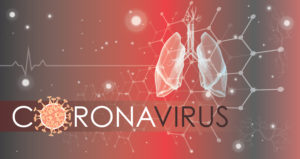After about 20 months of the first reported human case of the novel coronavirus, or Covid-19 identified by doctors, the impact of the disease continues to puzzle and scare the whole world. Although patients recover from this disease, trying their utmost best to get back to their daily lives, there are some anticipated side effects of the infection in the long run, which include cardiovascular diseases and other complications.
The Scientific Reports team dug deeper into this innovative systematic review as well as meta-analysis exploring the same question and reviewing some pieces of evidence from 15 isolated studies to list long-term effects they detected.
Sandra Lopez Leon, MD, Ph.D., the lead author of the report, an epidemiologist associated with the Novartis Pharmaceuticals, with her colleagues wrote, “Signs, symptoms, or any abnormalities or rare clinical parameters that persists for more than two weeks after the onset of the novel coronavirus and don’t return to its healthier baselines can be termed as potential long-term side effects of the infection.” They further stated, “Even though such alternations are mainly reported in case of severe and critical Covid-19 survivors, its lasting effects may even occur in patients with mild infections who were not even hospitalized.”

The team examined approximately 49,000 Covid-19 patients and gathered their data. About 80 percent of all these infected patients had at least one or more long-term side effects of the novel coronavirus. The most widely noticed side effects were fatigue in 58 percent of patients, headache in 44 percent of patients, attention disorder in 27 percent of patients, hair loss in 25 percent of patients, and dyspnea in 24 percent of patients. It was also observed that 11 percent of these patients developed an increased heart rate (resting) while another 11 percent also developed mild heart palpitations. The population of patients also reported diabetes in 4 percent cases, stroke in 3 percent, and myocarditis in 1 percent, and new hypertension in 1 percent.
The authors cited, “It is essential to have more information about future prospective studies to evaluate the course of coronavirus infection in the future and define the syndrome in the long run. When the clinical viewpoint is concerned, physicians must be aware of all the signs, symptoms, and essential biomarkers that were seen in patients who developed Covid-19 infection in the past to assess promptly, identify and slow down the long progression of the disease, reduce the risk of debilitating side effects and reestablish pre-Covid status of health. Managing these effects would require a further and deeper understanding to develop individualized, dynamic, and cross-sectoral interventions in the post-Covid-19 facilities having multi specialties, such as graded exercise, frequent physical and medical examination, physical therapy, cognitive-behavioral therapy, and other methods when needed.”
To detect any disease early, it is very important to go through a series of screening and imaging procedures. At sepStream®, expect to receive an unparalleled quality of medical imaging using sophisticated AI-enabled solutions. Latest software and skilled technicians deliver accurate imaging results in a very short time.
1 comment on The Pandemic Takes a Severe Toll with 55 Long-term Side Effects of Coronavirus
Comments are closed.